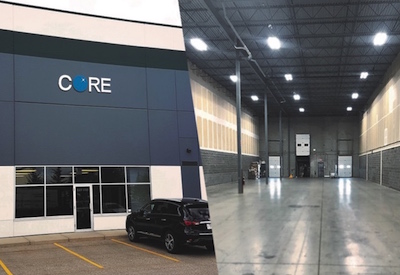7 Warehouse Tips to Improve Customer Satisfaction

Nov 30, 2020
By David Gordon
Dick Friedman, a warehouse productivity improvement “guru” with much experience working with electrical distributors, shares thoughts distributors should consider as there becomes the proverbial “light at the end of the tunnel” for COVID (due to pending vaccines), fierce competition and the potential for a resurgent market. Acting now can prepare distributors to support account retention, improve satisfaction and ensure loyalty. — DG
By now, most readers know that Home Depot is buying HD Supply and that there are three coronavirus vaccines that may soon be available (with two possibly this month). As we enter a new and safer year, sales for electrical distributors should increase. But some electrical distributors, especially those who also sell industrial supplies, could face more competition from Home Depot and HD Supply. This is especially true for those who serve residential contractors as well as the property management market.
One way to counter that competition is to be able to deliver to customers all the products promised on an order, in the quantities ordered, and on time. If customers are disappointed too often, they will place orders elsewhere, or perhaps take all their business elsewhere.
Here are some “tips” for ensuring that the warehouse can fulfill customer expectations — tips for increasing warehouse accuracy to 99% or more.
Organization — Store the most frequently-picked items closest to the packing area, and even where items are stored by “family” or vendor line, store faster moving families closer to the front of that area. Regardless of arrangement, if more than one item is stored on the same shelf, location codes should contain the identification of each usable location (aisle, bay, level, slot). The exception is that heavy products should be stored on the lowest shelf or on the floor.
Receiving — If a unit of measure in PO/put-away data (on the screen of a scanner or on a printed put away list) is not the same as that on the corresponding packing list, the receiver should note that discrepancy on the packing list or record it via the scanner.
Put away — High picking accuracy requires recording storage locations as soon as possible, and accurately. If there is no permanently assigned storage location for a newly received item because its location is determined after receiving, the person doing the put away must record the selected location on any document taken along during put away (e.g. copy of PO) or a put away form, or via bar code scanning of the location-ID code. If paper is used, the new location ID must be entered into the ERP system ASAP.
Pull down — The time to replenish picking locations from bulk/overflow is before daily picking begins, regardless of whether someone is using a printed pull-down list or displays data on a bar code scanner. Pulling down and picking at the same time leads to congestion that tends to cause mistakes.
Picking — To avoid the rushing that causes mistakes, items must be picked in a sequence that minimizes walking time, which is minimized by storing items as described in “Organization,” above. But listing all items on one pick ticket or displaying all on a scanning device may not minimize picking time. If there is a great variation in item size or weight, using one person to pick all the lines for an order may take more time than splitting the order into two or more tickets or RF-displays — one for the smaller items, and one for the larger/heavier items.
Packing/QC — If possible, during packing, before an item is placed in a carton or wrapped or simply placed on a pallet, the checker should compare the code of the item to the data for the order — visually or via scanning bar coded labels — and verify the quantity being packed to the quantity on the order. To avoid repeating mistakes already made, an order checker should not be the same person who picked the order being checked.
Loading — To save time and reduce mistakes, the smaller and lighter items and packed cartons of an order should be placed on rolling shelves that are used only for staging outbound orders (not picking), with only one order on any section of a rolling shelf unit. Each rolling shelf can be pushed into or near the appropriate truck.
Although Home Depot and HD Supply have spent millions on their warehouses, traditional electrical distributors can increase customer satisfaction by using these seven warehouse tips instead of spending large amounts of money.
About the author
For more than 20 years, Dick Friedman has helped electrical distributors prevent warehouse mistakes that lose sales and customers. Dick has even helped significantly increase warehouse accuracy for distributors using bar codes but not achieving a high level of accuracy. He does not sell systems, software, or warehouse technology, and is an objective and unbiased certified management consultant. Contact him at www.GenBusCon.com for a free consultation or more information.
David Gordon is President of Channel Marketing Group. Channel Marketing Group develops market share and growth strategies for manufacturers and distributors and develops market research. CMG’s specialty is the electrical industry. He also authors an electrical industry blog, www.electricaltrends.com. Channel Marketing Group does not engage with clients on detailed pricing strategies, however, given that pricing is a critical element of sales, marketing and growth planning, we do get asked about the topic and can share opinions and refer to those who focus on the area as well as share anecdotes. David Gordon can be reached at 919-488-8635 or dgordon@channelmkt.com.











